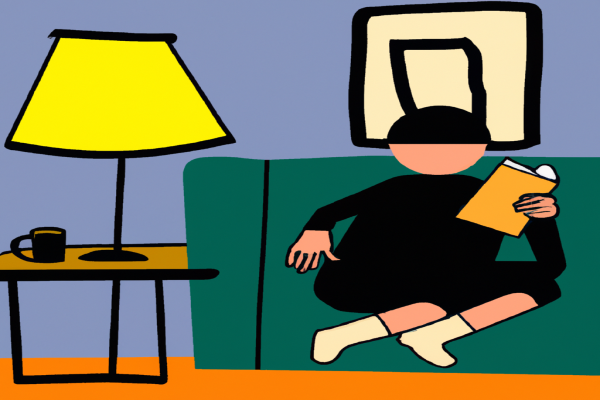The House on Mango Street: Summary

The House on Mango Street is a coming-of-age novel by Sandra Cisneros, narrated by protagonist Esperanza Cordero. It follows Esperanza as she grows up in a Latino neighborhood in Chicago, exploring her identity and the struggles of growing up in her community. Through a series of vignettes, we see Esperanza's relationships with family and friends, her dreams of one day leaving Mango Street and her desire to better herself and her community. The novel examines themes such as poverty, gender roles, and the power of imagination.
Want to know more?
What is The House on Mango Street about?
The House on Mango Street is a coming-of-age story that follows the life of Esperanza Cordero, a young Latina girl living in a poor neighborhood of Chicago. Esperanza struggles to find her own identity and place in the world as she navigates her way through the harsh realities of poverty, racism and sexism. Through her experiences, she comes to understand and appreciate her own cultural identity and heritage. The novel also deals with themes such as family, friendship, belonging, dreams and self-determination. Additionally, it highlights the importance of perseverance in overcoming adversity.
The House on Mango Street: Book Club Questions
- What do you think the symbolism of the house on Mango Street is?
- How does Esperanza's character arc change throughout the novel?
- What are some ways in which gender roles are portrayed in The House on Mango Street?
- How do the stories that Esperanza tells and hears reflect the lives of people living in her community?
- What is the significance of the title of the novel?
- What message does Esperanza hope to convey to her readers through her writing in The House on Mango Street?
- What themes are reflected throughout the novel, and how do these themes relate to Esperanza's experiences?
- In what ways does Esperanza defy traditional expectations for a young girl from her background?
- How does Esperanza's identity as a Mexican-American girl shape her worldview?
- How does the author use imagery and imagery to convey meaning in The House on Mango Street?
What to say about The House on Mango Street
- The House on Mango Street is a great example of the power of storytelling, in that it weaves together seemingly disparate elements to create a vivid and cohesive narrative.
- The novel's structure is unique in that it combines both traditional and experimental elements, creating an interesting reading experience.
- The House on Mango Street contains many subtle yet powerful observations about the complexities of growing up in a poor urban environment.
- The book's protagonist, Esperanza, is an incredibly relatable character whose struggles and triumphs will resonate with many readers.
- Sandra Cisneros' vivid use of language helps to bring her characters and setting to life in a way that few authors can achieve.
- The story's themes of identity and belonging help to create an emotionally compelling narrative that readers will find hard to forget.
- Despite its brevity, The House on Mango Street provides a great deal of insight into its characters and their lives within their community.
- By approaching complex issues such as poverty, discrimination and family dynamics from Esperanza's point of view, this book offers a refreshing perspective that readers won't soon forget.
- The House on Mango Street is an enjoyable read for all ages due to its accessible writing style and engaging characters.
- This book is a timeless classic which stands out for its ability to examine difficult topics while still providing an entertaining read.
Top 5 Quotes from The House on Mango Street
- "In English my name means hope. In Spanish it means too many letters. It means sadness, it means waiting."
- "We don't all have to live on the same street, but maybe we all need to live on the same world."
- "I am surrounded by too many people who forget what it is to be alive and free."
- "If you look hard enough you see that even the ugliest houses have something to say."
- "Even when you’re lonely,/you’re not alone./Your heart is a house./It has its own rooms/and its own secrets."
Adaptations of The House on Mango Street
1. TV: The House on Mango Street (1989) 2. Film: Esperanza Rising (2020) 3. Radio: The Mango Street Radio Hour (2017) 4. Podcast: The House on Mango Street: Unabridged (2017) 5. Theatre: The House on Mango Street Live! (2018)
Other books by Sandra Cisneros
- Caramelo
- Woman Hollering Creek and Other Stories
- Have You Seen Marie?
- My Wicked, Wicked Ways
- A House of My Own: Stories from My Life
- Loose Woman
- Hairs/Pelitos
- Bad Boys
- My Poetry Teacher and Other Essays
- The Art of Enchantment: How to Write a Story
Did you know?
The House on Mango Street was originally published in 1984 and has sold over 6 million copies.




